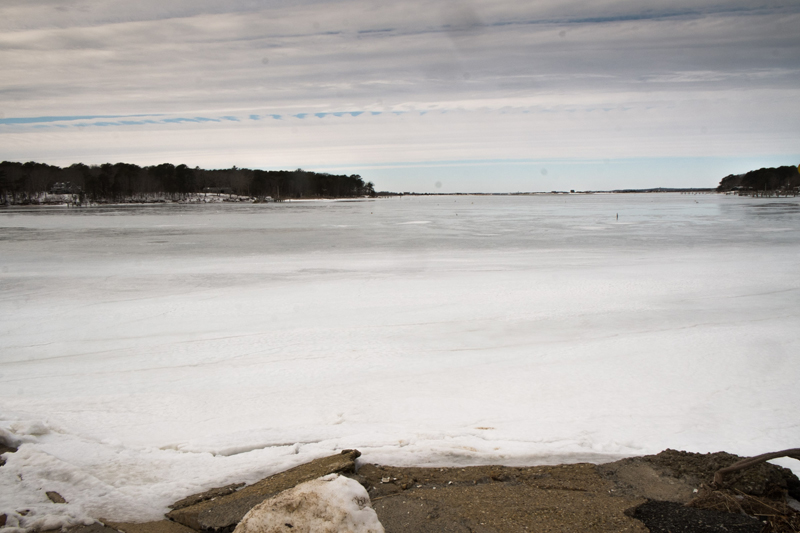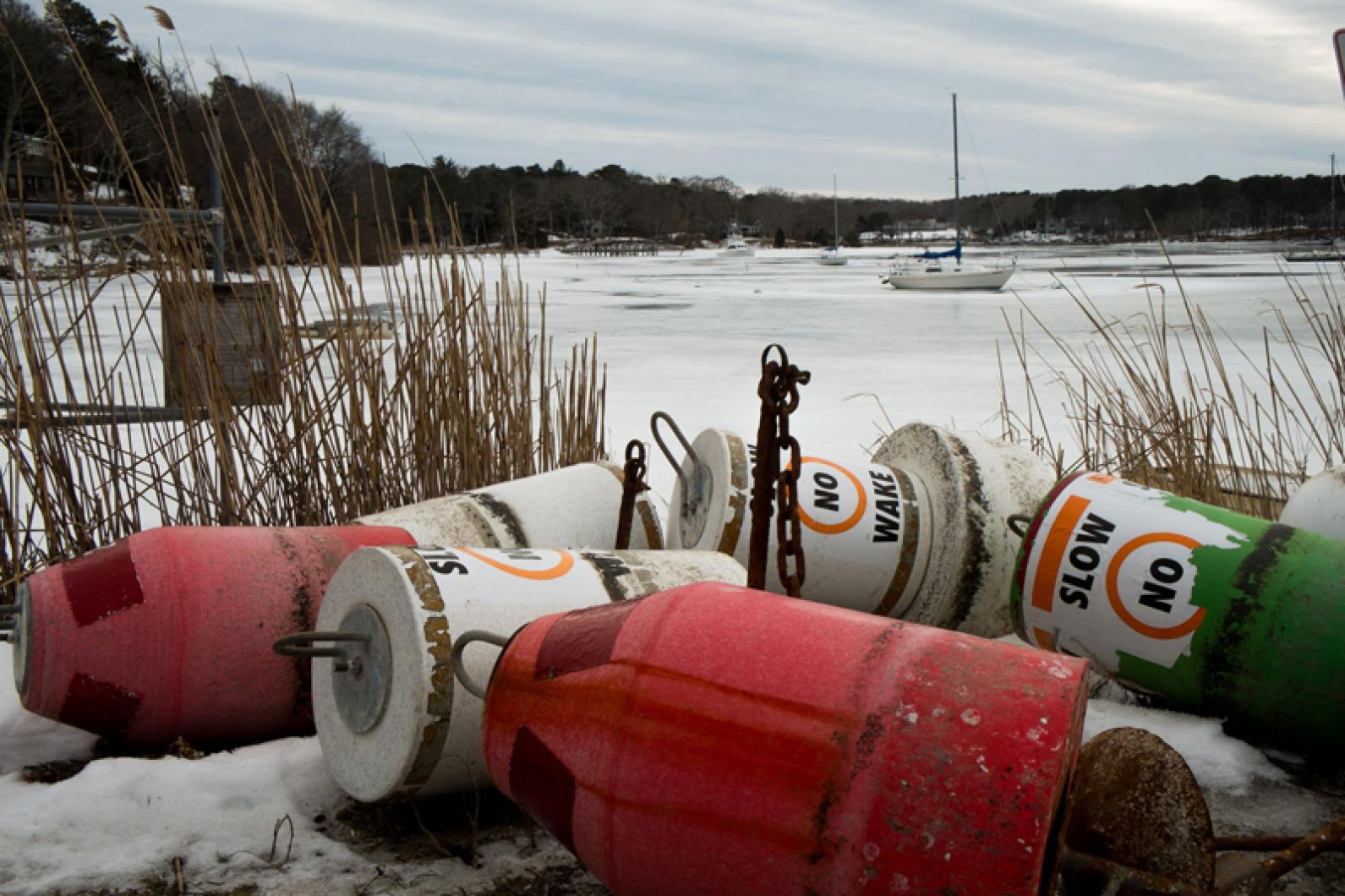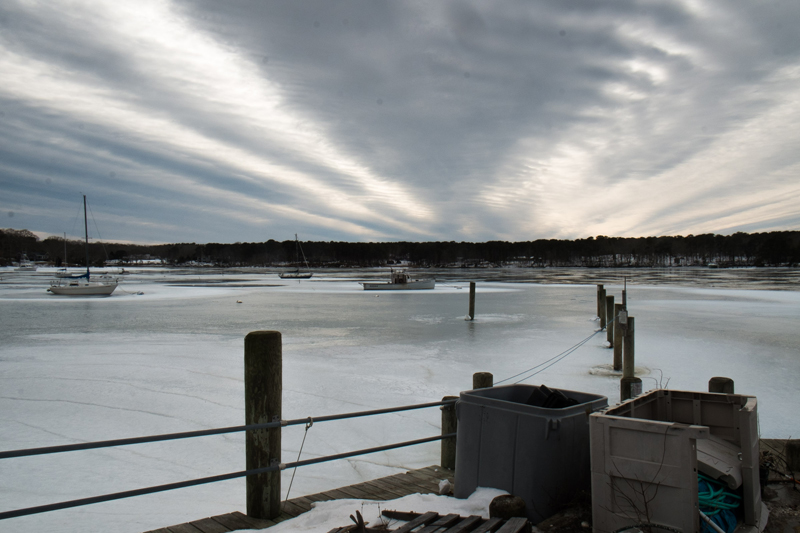More than 10 years after the state began studying Tashmoo Pond as part of the Massachusetts Estuaries Project, a final report on the pond’s declining health is expected to be released this week.
Brian Howes, a professor at UMass and technical director for the MEP, presented the main findings of the report last week at the Katharine Cornell Theatre. The centerpiece of the report is an analysis that shows the pond’s nitrogen concentration will need to be cut by a third in order to maintain a healthy habitat.
The study began in 2003, shortly after the estuaries program began, but experienced a series of delays related to contracts between the Uniuversity of Massachusetts and the Department of Environmental Protection, competing priorities in other parts of the state, procedural changes and other factors.
The public presentation had originally been scheduled for January but was also delayed.
“The truth is, contracting with the DEP and the state has always been difficult and never timely,” Roland Samimy, a senior scientist at UMass and an author of the study, said this week. “Then there was a bunch of years, like a two-year gap, when we didn’t even have a contract with the state.”
It took the project two years to be approved by the DEP, and there were instances where the baseline data for some ponds were less complete than expected, Mr. Samimy said. He added that having annual contracts with the state, rather than one contract for the duration of the project, has also caused delays.
The Tashmoo report is among the last to come out of the estuaries project, which is funded jointly by the state and individual towns. The MEP originally hoped to study 89 estuaries in all, but that number was later reduced to 70 when some towns declined pay their share of the studies. The reports do not offer specific solutions but provide towns with the tools to address the issues on their own.
Final reports have been issued for seven ponds on the Vineyard, not including Tashmoo, with seven others in progress. In Edgartown, all of the data has been collected for Katama Bay, Edgartown Harbor, Cape Pogue and Pocha Pond, but the DEP has not yet committed to funding those studies.
Tashmoo Pond itself is in Tisbury, but its watershed extends into West Tisbury and a small portion of Oak Bluffs. Thirteen of the Island’s 24 estuaries have watersheds in one or more of those three towns. Tashmoo is the last of those estuaries to be studied by the MEP. A study of James Pond in West Tisbury was never funded.

Despite the delays, Mr. Samimy was confident that the Tashmoo study reflected the present state of the pond. He said researchers circle back as necessary during the process to collect additional data if they think things have changed, but he didn’t believe there had been any major changes. He expected the final report to be released by the end of the week.
Mr. Howes said at the presentation that Tashmoo Pond is not much different than other Island estuaries, all of which are impaired to some degree. The solutions for each system are also basically the same: increase tidal flushing and decrease the amount of nitrogen entering the watershed.
As with other estuaries around the state, the biggest threat to Tashmoo is an overabundance of nitrogen, mostly from septic systems and land use changes. Too much nitrogen leads to phytoplankton blooms that block out the light, leading to the loss of eelgrass and benthic animal habitat.
“Almost every estuary in southeastern Massachusetts has undergone an explosion in land use,” leading to a major increase in nitrogen levels over the last 60 or 70 years, Mr. Howes said. “During that period, people observed over and over again that there is loss of shellfish, loss of eelgrass.”
The MEP usually focuses on eelgrass as an indicator of the health of an estuary.
“Basically what eelgrass likes is what the normal person that comes to this region to enjoy the environment likes,” Mr. Howes said. “Clear water, not big blooms, lots of shellfish, lots of other things.” The Cape and Islands region has lost about half of its eelgrass and half of its benthic animal habitat, he said. Worldwide, eelgrass habitat has declined by about 65 per cent.
Tashmoo has an upper and a lower basin, with the upper basin farther from the inlet. Most of the trouble is in the upper basin, which does not benefit as much from tidal flushing (although Mr. Howes said the inlet currently flushes as well as it could). Based on the presence of eelgrass and other life, the report says the upper basin is moderately or significantly impaired.
“The lower basin, even though it’s looking pretty good, is still impaired,” Mr. Howes said.
Some of the nitrogen comes from atmospheric deposition and natural sources that cannot be controlled. But about 80 per cent of the controllable load comes from septic tanks. Management options include relocating nitrogen sources to wetlands or other areas where more attenuation can occur, reducing fertilizer use, and installing sewers or denitrifying systems.
Sustaining the pond’s natural habitat would require reducing the nitrogen concentration in the pond from .386 to .36 milligrams per liter, according to the report. That would require a 32 per cent reduction in the amount of nitrogen entering the pond through the watershed.
“If you are just going to go after septic systems and nothing else, it’s a big number,” Mr. Howes said. “You would have to remove the load from 43 per cent of the septic systems as they exist today.” He considered sewering to be a last resort, but in more heavily developed areas such as around Lagoon Pond in Tisbury and Oak Bluffs, sewering may be unavoidable.
With help from the Martha’s Vineyard Commission, MEP researchers catalogued every parcel of land in the Tashmoo watershed. Mink Meadows Golf Club was even broken down into tees, greens and fairways to ensure an accurate model. In 20 years, the report says, if no action is taken, the nitrogen concentration in the pond will likely increase by 38 per cent, with the upper basin taking the hardest hit.
Once action is taken, however, the pond could recover in less than five years, according the study.
“The problem is that there is a lot of logistics and money and politics [involved] in doing the implementation,” Mr. Howes said. “The delay isn’t worrying about how long it takes the system. The delay is how long will it take to generate the public will and the resources to do it.”








Comments (3)
Comments
Comment policy »